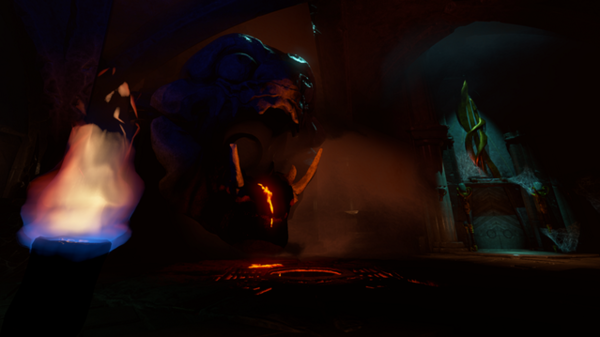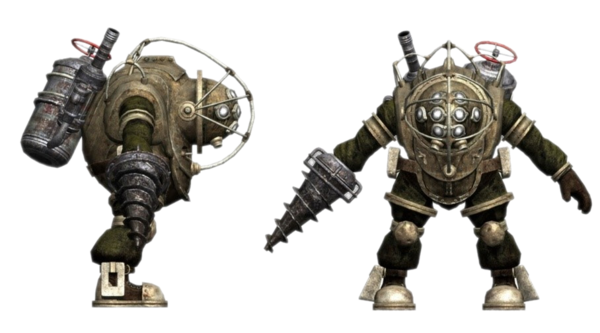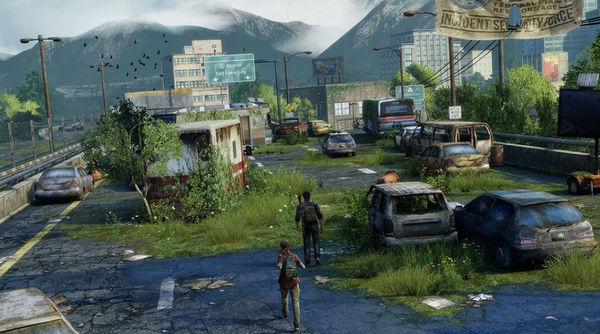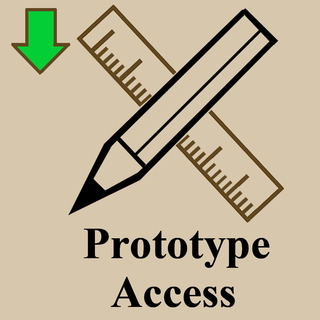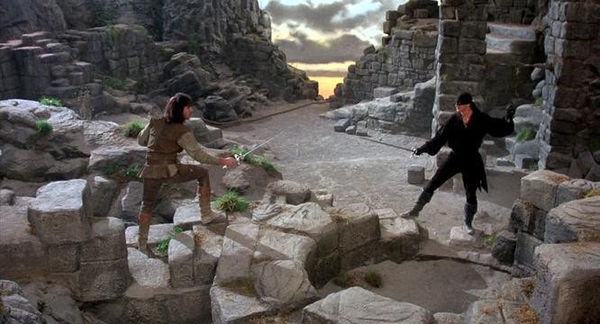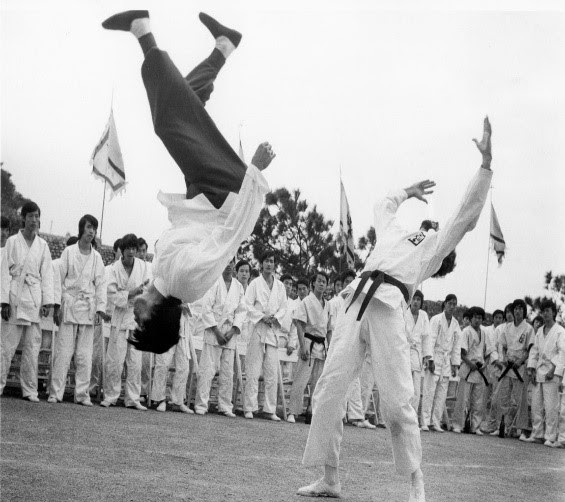Update 47
Underworld Ascendant Start of 2016 Update[edit]
Jan 11 2016
It’s a start of a new year and we thought we’d update you on all that’s happened on the project since last fall. We’ve been posting regular updates via an emailed newsletter, so if you’d like more frequent updates than you’re getting on Kickstarter, you can sign up through this link. Also, add us on Twitter, while you’re at it!
Here are highlights from recent newsletters:
In October, We Showed Our First Prototype[edit]
It’s a video walk-through made from a running build of the game. You can watch it here:
The Prototype is tightly-focused around highlighting key areas of progress:
- We wanted to have a big step up on the visual bar from the rough prototypes we showed during the Kickstarter. The final game will look even better of course, but this snapshot shows a lot of progress.
- In the gameplay department, we’re showing some fun stealth gameplay, but flipped on its head of what we designed for Thief: The Dark Project. Here a stealthy monster, the Shadow Beast, is stalking the player. Our protagonist is a rogue who is virtually unarmed and must rely on her wits to defeat the creature. This interaction highlights the capability of Underworld Ascendant’s Improvisation Engine, from manipulating the lava flow and lighting torches to change the light levels to keep the beast away.
- Then there is the audio soundscape to help deepen the immersion, as well as select voice overs to convey the game’s narrative. If you listen closely to the soundscape, you’ll hear some ‘musical’ beats happening. We plan to work with sound as a game system and to enhance the character of The Underworld itself. We learned many lessons about audio and its importance on Thief: The Dark Project and System Shock 2. (To be clear, the VO of the rogue in the prototype is there only as a narrative piece to explain what the player might be thinking. There won’t be player voice-over in the final game, as it’s a true role-playing game and we don’t intend to speak for the player.)
The Prototype covers just a tiny corner of The Stygian Abyss and is focused on just the single encounter between a rogue character and the Shadow Beast. In the actual game there will be MUCH, MUCH more going on within the world and many more choices for a player. Regardless, we think the Prototype shows great progress since the Kickstarter and we hope you agree. It’s gotten some nice press, including Quarter to Three Podcast, GamesRadar Podcast, and An Early Look at Underworld Ascendant.
In November, Nate Wells Joined the Team as Art Director[edit]
- Big Daddy from Irrational’s Bioshock
Image Credit: Take Two Interactive
- Big Daddy from Irrational’s Bioshock
Nate has joined the OtherSide team as our Studio Art Director. Nate has been the Art Director on some pretty impressive titles, like Irrational's Bioshock and Bioshock Infinite, Naughty Dog's Last of Us, and the recent Rise of the Tomb Raider. Nate got his start back at Looking Glass as a level designer and artist on Thief: The Dark Project and System Shock 2. We’re thrilled to have another one from the Looking Glass fold!
- Image Credit: Sony Computer Entertainment
Some words from Nate himself on his thoughts about Underworld Ascendant:
"The artistic vision for Underworld Ascendant is born out of my feelings about the state of fantasy in the world. Not just in games but in film, television, and books. Recently, fantasy has crossed over into the mainstream with Game of Thrones and the Tolkien movies. One of the things that I really feel is fantasy used to be fun and now it is gritty, brooding, and loaded with political allegory. For me, I just have the amazing memories of pen and paper gaming back in the early 80's and how much fun it was and what a sense of humor it had about itself and feel that fantasy has lost its self-awareness and its sense of humor. That was my jumping off point for the art direction for Underworld Ascendant.
“So I went back and dug out my dusty old Dungeon and Dragons books from my parent's home and started thumbing through them. I asked myself what was it that I loved so much about that era in fantasy? What I found really was there was a sense of levity and this naiveté to the art, because a lot of that early art wasn’t done by professionals, it was done by game designers who could 'kinda' draw. So when you go back to those early 1st edition books, you think, ‘Wow, I can't believe that this piece of art actually made it into a book.’ These days, we have these amazing professional artists and they choose to use their skills to do fantasy and science fiction -- which is fantastic, but everyone is getting so deadly serious about it. They want all their fantasy to look... real and feel real. My feeling is most games in the fantasy realm lately have also caught this reality bug. It seems that most groups are about trying to bring fantasy to absolute realism with real trees, real grass, time of day, and all that stuff. I think chasing photo-realism in fantasy isn't the answer. I think to recapture a retro sense of fantasy, fantasy the way our inner child remembers it. We didn't have Game of Thrones or Lord of the Rings telling us what a castle looked like or what a giant two-headed zombie looked and acted like.
“So for Underworld Ascendant, what if the world bore the authorship of a tabletop game? Think of the old lead figures, the miniature play fields, and what if Ascendant used that philosophy of everything being hand crafted and looking hand-crafted? Natural, man-made... All of it. All of it looks like it was sculpted by an artist. That and bringing back some of the levity to the fantasy. We don't have to be so deadly serious and bleak. A little more whimsy and a little less brooding."
Just Before Thanksgiving, We Released the First Playable Prototype[edit]
The Playground Prototype all about physics-based puzzles set in a corner of The Stygian Abyss. The visuals have been intentionally kept very sparse, since wanted to completely focus on the gameplay aspects. So be forewarned, it looks as plain as vanilla.
The fun is in the physics puzzles, where we challenge you to solve tricky bits using an early pass of The Improvisation Engine. Even at this early stage, there are dozens of ways to solve challenges -- some which our team haven’t even discovered yet. Will you? The Prototype also features a first pass on the magic system, which likewise feeds into the open-ended nature of solving challenges.
If you are (or become) a backer at a Pioneer or higher pledge tier, you can get access now to the Prototype to as a $5 Add-On. With this Add-On, you’ll also earn a $5 credit good towards a future pledge. To learn more details, go HERE.
In December, We Smashed![edit]
Fleshing out the combat system became a focus. We started work on an internal Prototype where you can smack things with… well, at the moment, a stone axe. Not glamorous, but it does the blunt work.
As with the other game systems, our goal with combat is to give the player a range of interesting choices on how to approach a problem. At the same time, we don’t want seventy-five buttons for the player to memorize. The trick is in striking the right balance between tactical depth and keeping the system streamlined enough so that players can readily get a handle on combat.
We also realize there are different types of gamers out there. Some love moving though a 3D space like an over-caffeinated ninja. Others prefer to be more careful and slower-paced about their actions. On the team, Chris is a twitch gamer. His idea of perfection of movement is Ninja Gaiden or running around in Mirror’s Edge and Titanfall. Tim isn’t as much a fan of twitch gameplay, preferring more paced and tactical thinking in his combat.
Since we’re a role-playing game at heart, we’ll be leaning more towards tactical pacing for Underworld Ascendant.
- Seems appropriate considering the rocky terrain, don’t you think?
A good example of more tactical pacing would be the sword fight from the film Princess Bride. In it, two masters use both their skills and the environment in an intense match, but don’t fly around a la Iron Monkey.
- Boot to the Head skill
One way to introduce some twitch gameplay into the system is to have a handful of ‘twitchy’ abilities deeper in the skill tree. This way, players who enjoy these aspects can get it, if they work for it.
One concept we’re diving into is “running combat”: battles that span across spaces, where terrain, elevation, and obstacles paly into the tactics. Objects can become part of the fight; from picking up and throwing a wine bottle to causing a stalagmite to fall on your enemy. Sometimes disengaging and moving off is the best idea. What we’re trying to avoid is what we call “chopping wood” combat, where you stand there, click the button and… whack, whack, whack, the enemy dies.
Like all of our design, this is an iterative process. We build the foundation first, then start adding on layers. The initial core is mostly complete for basic combat and the same can be said for our movement. Then comes the testing, the refinement, and, if needed, the redesigning of the parts that don’t pass the fun test.
Looking Forward Into 2016[edit]
As the New Year begins, we’re busy making the transition to full production. The focus shifts to building out all the game play elements based on all the concept and pre-production ground work that has been done. Over the coming months, we’ll be laying out the various areas of The Stygian Abyss, placing loot and traps, populating with creatures friendly and vile, laying out the narrative arc, crafting player progression and skill trees – all that stuff that makes for an RPG. It’s going to be busy, but much fun to see all the progress.
Keep digging!
The OtherSide Team
See Also[edit]
- Stygian Sentinel #9
- Stygian Sentinel #10
- Stygian Sentinel #11
- Stygian Sentinel #12
- Stygian Sentinel #13
- Stygian Sentinel #14
- Stygian Sentinel #15
- Stygian Sentinel #16
- Stygian Sentinel #17
